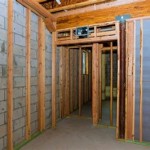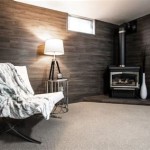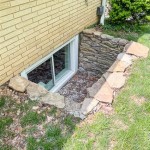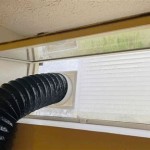Best Paint for Concrete Block Walls in Basements: A Comprehensive Guide
Concrete block walls are a common structural element in basements. While durable, concrete is porous and susceptible to moisture penetration, often resulting in efflorescence, mold growth, and overall dampness. Choosing the right paint is crucial to protecting these walls, improving the basement's aesthetics, and creating a more comfortable living space. This article provides a comprehensive guide to selecting the best paint for concrete block walls in basements, focusing on key properties and product types that offer lasting protection and visual appeal.
Many basements inherently have higher levels of humidity than other parts of a home. Concrete is a material that readily absorbs and retains moisture, so proper preparation and application of appropriate paint are essential to prevent future problems. Ignoring this will lead to paint failure, the return of dampness, and the potential for more extensive repairs.
Understanding the Challenges of Painting Concrete Block Basements
Painting concrete block walls in basements presents a unique set of challenges. These challenges stem from the material's inherent properties and the typical basement environment.
- Porous Surface: Concrete block is highly porous, allowing water vapor to pass through relatively easily. This porosity can lead to paint blistering, peeling, and even delamination if the chosen paint lacks the necessary properties to resist moisture migration.
- Alkalinity: New concrete is alkaline, and this alkalinity can react negatively with certain types of paint, causing saponification (a chemical reaction that degrades the paint film) and compromising its adhesion.
- Moisture Exposure: Basements are often prone to moisture intrusion from various sources, including groundwater seepage, condensation, and leaks. Paint needs to be highly resistant to moisture to prevent water damage and mold growth.
- Efflorescence: This is a white, powdery deposit that appears on the surface of concrete. It’s caused by soluble salts within the concrete being carried to the surface by moisture and then left behind as the water evaporates. The presence of efflorescence indicates moisture issues and needs to be addressed before painting.
- Uneven Surface: Concrete blocks have a textured surface with mortar joints, which can make achieving a smooth, uniform finish challenging. The paint needs to be thick enough to bridge minor imperfections and provide adequate coverage.
Addressing these challenges requires careful selection of a paint that can withstand the specific conditions of a basement environment. Proper surface preparation is also crucially important to ensure optimal paint adhesion and long-term performance.
Key Properties of the Best Paint for Concrete Block Walls
When selecting paint for concrete block basement walls, specific properties are paramount to ensure durability and protection. These properties contribute to the paint's ability to withstand moisture, resist alkalinity, and provide a lasting finish.
- Waterproof or Water-Resistant: The paint should effectively block water from penetrating the concrete. Look for paints labeled as "waterproof" or "water-resistant," implying they create a protective barrier against moisture intrusion. Some paints contain additives that enhance their water-repelling capabilities.
- Alkali Resistance: The paint should be formulated to resist the alkalinity of concrete. Alkali-resistant paints will not be affected by the chemical reactions that can occur with alkaline surfaces, preventing premature degradation and ensuring long-term adhesion.
- Breathability: While waterproofing is crucial, the paint should also allow for some degree of breathability. This allows moisture vapor to escape from the concrete, preventing it from becoming trapped behind the paint film and causing blistering or peeling. Breathable paints are often formulated with a specific permeability rating.
- Mold and Mildew Resistance: Look for paints that contain mildewcides or other antimicrobial agents to inhibit the growth of mold and mildew. This is especially important in basements, where high humidity levels can create a favorable environment for these organisms to thrive.
- Adhesion: The paint must have excellent adhesion to concrete surfaces, even if the surface is slightly damp or has minor imperfections. Proper surface preparation, including cleaning and priming, is essential to maximize adhesion.
- Durability and Scrubbability: The paint should be durable and resistant to scratching, scuffing, and staining. Scrubbable paints allow for easy cleaning without damaging the finish.
These properties collectively contribute to a paint that effectively protects concrete block walls from moisture damage, mold growth, and other issues common in basement environments.
Types of Paint Suitable for Concrete Block Basement Walls
Several types of paint are formulated to address the challenges of painting concrete block basement walls. Each type has unique properties and advantages, making it suitable for different situations.
- Waterproof Coatings: These are usually cement-based coatings that create a very tight bond with the concrete and stop water penetration. Waterproof coatings are applied in thicker coats than paint and are meant to prevent water from coming through the walls. Many waterproof coating require multiple coats and proper curing procedures.
- Epoxy Paint: Epoxy paints are two-part systems that consist of a resin and a hardener. When mixed, they create a durable, water-resistant, and alkali-resistant coating. Epoxy paints provide excellent adhesion and are highly resistant to chemicals and abrasion. They are particularly well-suited for basements that are prone to heavy moisture exposure or that are used as utility areas. Epoxy paint typically requires more surface preparation.
- Acrylic Latex Paint: Acrylic latex paints are water-based paints that offer good adhesion, durability, and alkali resistance. They are relatively easy to apply and clean up, and they are available in a wide range of colors and finishes. While acrylic latex paints are water-resistant, they may not be as effective as epoxy paints or waterproof coatings in areas with severe moisture problems. Using an acrylic latex paint over a suitable primer will increase its effectiveness.
- Elastomeric Paint: Elastomeric paints are flexible coatings that can stretch and contract with the concrete, preventing cracks and peeling. They are highly water-resistant and offer excellent protection against moisture intrusion. Elastomeric paints are typically thicker than other types of paint and require specialized application techniques. They’re a good option for concrete block walls with pre-existing cracks.
- Concrete Sealer: While not technically paint, a penetrating concrete sealer can be applied before painting to reduce the concrete's porosity and prevent moisture absorption. A sealer will help the paint adhere better and prolong its life. It's particularly useful when repainting a surface that has previously suffered from moisture issues.
The choice of paint type depends on the specific conditions of the basement and the desired level of protection. For basements with severe moisture problems, waterproof coatings or epoxy paints may be the best option. For basements with moderate moisture exposure, acrylic latex paints or elastomeric paints may be sufficient.
Surface Preparation: A Critical Step for Success
Surface preparation is arguably the most important factor in ensuring the success of any paint job on concrete block walls. Proper preparation creates a clean, sound surface that allows the paint to adhere properly and provide long-lasting protection.
- Cleaning: Thoroughly clean the concrete block walls to remove any dirt, dust, grease, mildew, or efflorescence. Use a stiff brush, a solution of trisodium phosphate (TSP), and water to scrub the walls. Rinse thoroughly with clean water and allow the walls to dry completely. A pressure washer can be used to speed up the cleaning process, but be careful not to damage the concrete.
- Efflorescence Removal: If efflorescence is present, scrub the affected areas with a wire brush and a solution of muriatic acid (hydrochloric acid) diluted with water according to the manufacturer's instructions. Wear appropriate protective gear, including gloves, eye protection, and a respirator, when working with muriatic acid. Rinse the walls thoroughly with clean water to remove all traces of the acid.
- Repairing Cracks and Holes: Fill any cracks or holes in the concrete block walls with a concrete patching compound or hydraulic cement. Follow the manufacturer's instructions for mixing and applying the patching compound. Allow the patching compound to dry completely before proceeding to the next step.
- Priming: Apply a concrete primer to the walls. A primer will help to seal the concrete, improve paint adhesion, and block stains. Choose a primer that is specifically designed for concrete surfaces. Allow the primer to dry completely before applying the paint. Some primers are designed to block efflorescence and will be more effective if efflorescence is present.
Skipping any of these steps can lead to paint failure, even if the best paint is used. Invest the time and effort to properly prepare the surface, and the resulting paint job will be more durable and long-lasting.
Application Techniques for Concrete Block Walls
Applying paint to concrete block walls requires specific techniques to ensure proper coverage and adhesion. Using the right tools and methods can make a significant difference in the final result.
- Choosing the Right Tools: Use a thick-nap roller (typically 3/4 inch to 1 inch) to apply the paint to the textured surface of the concrete blocks. A brush can be used to cut in around edges and corners and to fill in any recessed areas. An airless sprayer can also be used for faster and more uniform coverage, but it requires masking off surrounding areas to prevent overspray.
- Applying the Paint: Apply the paint in thin, even coats, working from top to bottom. Overlap each stroke slightly to ensure complete coverage. Pay particular attention to filling in the mortar joints and any recessed areas in the concrete blocks. Apply two or more coats of paint, allowing each coat to dry completely before applying the next.
- Addressing Pinholes: Due to the porous nature of concrete block, pinholes may appear in the paint film. To address this, apply a thicker coat of paint or use a specialized pinhole filler. Alternatively, apply a second coat of paint after the first coat has dried completely, focusing on filling in any visible pinholes.
- Proper Ventilation: Ensure adequate ventilation in the basement during and after painting. Open windows and doors to allow fresh air to circulate. Use fans to help speed up the drying process. This is particularly important when using epoxy paints or other solvent-based coatings.
Proper application techniques, combined with meticulous surface preparation and the selection of the right paint, will contribute to a professional-looking and long-lasting finish on concrete block basement walls.
Addressing Common Problems After Painting
Even with careful preparation and application, problems can sometimes arise after painting concrete block basement walls. Being able to identify and address these issues promptly is essential to maintaining the integrity of the paint finish.
- Blistering: Blistering is caused by moisture trapped beneath the paint film. If blistering occurs, it is essential to identify and address the source of the moisture. Remove the loose paint by scraping or sanding, and then allow the concrete to dry thoroughly. Apply a new coat of primer and paint, ensuring that the paint is breathable to allow moisture vapor to escape.
- Peeling: Peeling is often caused by poor adhesion due to inadequate surface preparation or the use of an incompatible paint. Remove the loose paint by scraping or sanding, and then prepare the surface properly by cleaning, priming, and repairing any cracks or holes. Apply a new coat of paint using a high-quality primer and paint that are specifically designed for concrete surfaces.
- Mold and Mildew Growth: Mold and mildew growth indicates excessive moisture and poor ventilation. Clean the affected areas with a solution of bleach and water, and then rinse thoroughly with clean water. Address the source of the moisture by improving ventilation or repairing any leaks. Apply a new coat of paint that contains mildewcides or other antimicrobial agents.
- Efflorescence Return: If efflorescence reappears after painting, it indicates that the source of the moisture is still present. Address the source of the moisture by improving drainage around the foundation or repairing any cracks in the concrete. Apply a concrete sealer to the walls to reduce moisture absorption.
Regular inspection of the painted concrete block walls can help to identify and address problems early on, preventing more serious damage from occurring. By taking prompt action to address any issues, it is possible to maintain the integrity of the paint finish and protect the concrete walls from moisture damage.

Painting Cinder Block Walls In A Basement Or Re Paint Them

6 Best Paints For Concrete Basement Walls

Painting Cinder Block Walls In A Basement Or Re Paint Them

Basement Finishing Do Not Paint Your Walls

Painting Cinder Block Walls In A Basement Or Re Paint Them
Best Basement Wall Paint On 100 Year Old Cinderblocks Diy Home Improvement Forum

6 Best Paints For Concrete Basement Walls

Painting Cinder Block Walls In A Basement Or Re Paint Them

Stylish Solutions Covering Unfinished Basement Walls Csg Renovation

Painting Cinder Block Walls In A Basement Or Re Paint Them
Related Posts







